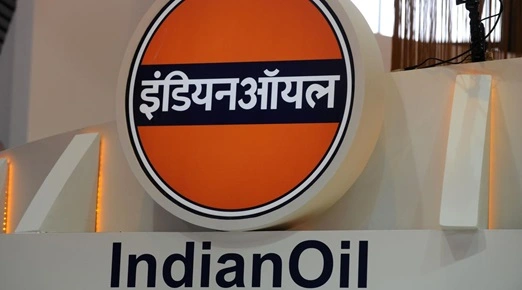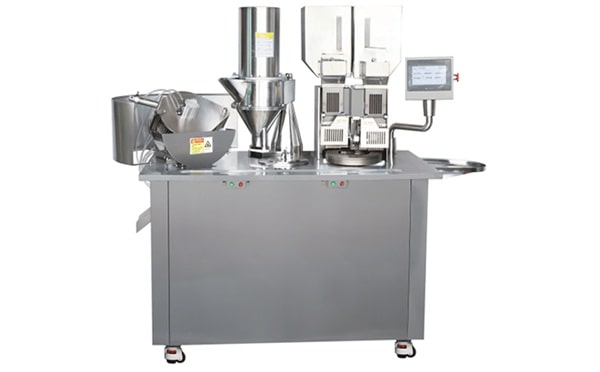Indian Oil Corporation Limited (IOCL), India’s largest commercial oil company and a leading energy provider, plays a crucial role in meeting the country’s energy needs. Established in 1959, IOCL has since become a key player in the downstream petroleum sector, with operations spanning refining, pipeline transportation, fuel marketing, and petrochemicals. Its network of refineries, pipelines, and retail outlets make IOCL a household name in India, serving millions daily. However, as the energy sector shifts toward sustainability and renewable energy, IOCL faces both opportunities and challenges. This SWOT (Strengths, Weaknesses, Opportunities, Threats) analysis explores IOCL’s current market position and future outlook in India’s evolving energy landscape.

Strengths
1. Extensive Refinery and Distribution Network:
IOCL has one of the most extensive refinery networks in India, with 11 refineries and a refining capacity exceeding 80 million metric tonnes per annum (MMTPA). This expansive capacity allows IOCL to meet a large portion of India’s demand for refined petroleum products, including gasoline, diesel, and liquefied petroleum gas (LPG). Additionally, IOCL operates the country’s largest pipeline network, ensuring efficient transportation of fuel across the nation. Its broad distribution reach, with over 29,000 retail outlets, positions IOCL as a reliable energy provider in urban and rural areas.
2. Market Leadership and Strong Brand Equity:
IOCL is India’s largest oil refining and marketing company, commanding over 40% of the market share in downstream petroleum. Its strong brand equity and reputation for reliability make it a trusted name among consumers and businesses. This market leadership gives IOCL significant bargaining power, stable cash flows, and a wide customer base. Being a government-owned entity also reinforces its position as a preferred choice for fuel distribution and government projects.
3. Diversified Product Portfolio:
IOCL offers a diverse range of products, from fuel (petrol, diesel, LPG) to lubricants, petrochemicals, and specialty products. This diversified portfolio allows IOCL to cater to multiple sectors, including automotive, aviation, industrial, and residential. The company’s strong presence in both the retail and industrial markets provides revenue stability and risk mitigation by spreading its business across various product lines.
4. Strong Financial Backing and Government Support:
As a state-owned enterprise, IOCL benefits from strong government support and access to financial resources for expansion and investment. Government support not only provides a cushion during economic downturns but also enables IOCL to participate in national-level projects and initiatives. The company’s strong financial performance, with substantial revenue and profit generation, allows it to invest in infrastructure, R&D, and alternative energy sources.
Weaknesses
1. Heavy Dependence on Fossil Fuels:
Despite its efforts to diversify, IOCL remains heavily dependent on fossil fuels for its revenue, with oil and gas products comprising the majority of its income. This reliance on fossil fuels makes IOCL vulnerable to fluctuations in crude oil prices, which are influenced by global supply-demand dynamics, geopolitical tensions, and environmental regulations. As India and the world transition towards cleaner energy, IOCL’s dependency on fossil fuels could impact its long-term growth prospects.
2. Regulatory Constraints and Price Controls:
IOCL operates in a highly regulated industry, with government controls on fuel pricing for products like LPG, kerosene, and even petrol at times. These controls limit IOCL’s ability to pass on cost increases to consumers, impacting profitability, especially during periods of high crude oil prices. Additionally, subsidies on fuel prices require IOCL to rely on government compensation, which can be delayed or inadequate, impacting cash flow.
3. Environmental Concerns and Carbon Emissions:
IOCL’s core operations contribute significantly to carbon emissions, which poses a reputational and regulatory risk as the government and environmental agencies push for stricter emissions standards. IOCL’s refineries, distribution processes, and pipeline network all contribute to its carbon footprint. This environmental impact puts pressure on IOCL to invest in cleaner technologies and meet India’s carbon reduction targets, which may increase operating costs in the long term.
4. Limited Presence in Renewable Energy:
While IOCL has announced plans to diversify into renewable energy, its investments in this sector remain relatively small compared to its core fossil fuel operations. As India’s energy mix shifts towards renewable sources, IOCL’s limited presence in areas such as solar, wind, and electric vehicle (EV) infrastructure may hinder its ability to capitalize on future energy trends and growth opportunities.
Opportunities
1. Expansion in Renewable and Alternative Energy:
With India’s increasing focus on renewable energy and sustainable practices, IOCL has a significant opportunity to expand into alternative energy sources. The company’s recent initiatives in biofuels, hydrogen, solar, and EV charging stations indicate its intent to diversify. Scaling these efforts and investing in renewable energy projects, like solar farms and wind energy, can position IOCL as a diversified energy provider and reduce its reliance on fossil fuels.
2. Growth in Electric Mobility and EV Charging Infrastructure:
As India pushes for electric vehicle adoption, the demand for EV charging infrastructure is expected to rise substantially. IOCL can leverage its extensive network of fuel stations by incorporating EV charging points at key locations across the country. By establishing a reliable EV charging network, IOCL can capture a growing market segment and position itself as a leading player in the electric mobility ecosystem.
3. Expansion into International Markets:
IOCL’s established expertise in refining, pipeline infrastructure, and fuel marketing provides a strong foundation for international expansion. The company has already expanded its footprint in countries like Sri Lanka, Nepal, and Mauritius. By targeting other emerging markets in Asia and Africa, IOCL can capitalize on rising energy demand and diversify its revenue sources, reducing dependence on the Indian market.
4. Leveraging Digital Transformation and Data Analytics:
The digital revolution in the energy sector provides IOCL with an opportunity to improve operational efficiency and customer experience. Through investments in digital technology and data analytics, IOCL can optimize its supply chain, enhance inventory management, and forecast demand more accurately. Furthermore, digital transformation initiatives like mobile apps, online fuel delivery tracking, and digital payment solutions can enhance customer engagement and loyalty.
Threats
1. Fluctuations in Global Crude Oil Prices:
IOCL’s profitability is heavily dependent on global crude oil prices, which are inherently volatile. Price fluctuations can result from geopolitical tensions, OPEC’s production decisions, and changes in global demand. Rising crude oil prices increase procurement costs, putting pressure on IOCL’s margins, especially in a regulated environment where price hikes cannot always be passed on to consumers.
2. Rising Competition from Private and Foreign Players:
India’s oil and gas sector has become increasingly competitive, with private players like Reliance Industries and foreign companies such as Shell entering the market. These companies often have more flexibility in pricing and a greater focus on innovation. Reliance’s focus on digitalization and renewable energy, for example, positions it as a strong competitor. The entry of foreign players with advanced technology and diverse offerings presents a threat to IOCL’s market share.
3. Regulatory and Environmental Compliance Pressure:
The energy sector faces increasing regulatory scrutiny regarding environmental impact, emissions, and sustainability. New regulations, such as stricter emissions standards or mandates on renewable energy adoption, could increase compliance costs for IOCL. Non-compliance or delays in transitioning to cleaner energy sources may lead to penalties and damage IOCL’s reputation.
4. Consumer Shift Towards Renewable Energy and EVs:
As consumers become more environmentally conscious, demand for fossil fuels may decline, especially with the rising adoption of electric vehicles and renewable energy sources. This shift in consumer preferences represents a long-term threat to IOCL’s traditional fuel business. To remain relevant, IOCL must adapt to changing consumer behavior by offering greener alternatives and investing in renewable energy.
Future Outlook
The future outlook for IOCL is shaped by both challenges and growth opportunities as India undergoes an energy transition. As the country’s largest oil refining and marketing company, IOCL will continue to play a vital role in meeting India’s energy demand. However, in a world increasingly focused on sustainability and carbon neutrality, IOCL must evolve to remain competitive.
One of the key areas for IOCL’s growth will be renewable energy and alternative fuels. The company has already taken steps in this direction by investing in biofuels, solar energy, and hydrogen projects. Scaling up these efforts and expanding into wind energy, large-scale solar farms, and even nuclear energy could help IOCL diversify its portfolio and capture a share of the growing renewable energy market. Aligning with India’s national goals for renewable energy adoption will strengthen IOCL’s position as a forward-looking energy provider.
The demand for electric vehicles (EVs) is expected to grow significantly in the coming years. Expanding its EV charging network across fuel stations could be a strategic move for IOCL, allowing it to tap into the electric mobility ecosystem. This would not only diversify its revenue sources but also position IOCL as a critical player in India’s electric vehicle infrastructure.
International expansion offers another growth avenue for IOCL. By targeting emerging markets in Asia and Africa, IOCL can diversify its revenue base, reduce reliance on the Indian market, and capture opportunities in regions with rising energy needs. Partnering with local firms, forming joint ventures, and investing in regional refineries and pipelines can help IOCL establish a stronger international footprint.
However, to stay resilient, IOCL must address challenges such as dependency on crude oil prices, regulatory compliance, and rising competition from private and foreign players. Adopting digital technology and data analytics will be essential to improve operational efficiency, optimize supply chain management, and enhance customer engagement. This digital transformation can help IOCL reduce costs and stay competitive in an evolving market.
In conclusion, IOCL’s strengths in market leadership, distribution, and brand equity position it well to capture growth in India’s energy market. By embracing renewable energy, expanding its EV infrastructure, and leveraging digital tools, IOCL can adapt to changing industry dynamics and secure its position as a key player in India’s sustainable energy future. With a balanced approach to innovation, sustainability, and operational efficiency, IOCL is well-prepared to navigate the challenges and capitalize on opportunities in India’s dynamic energy landscape.

